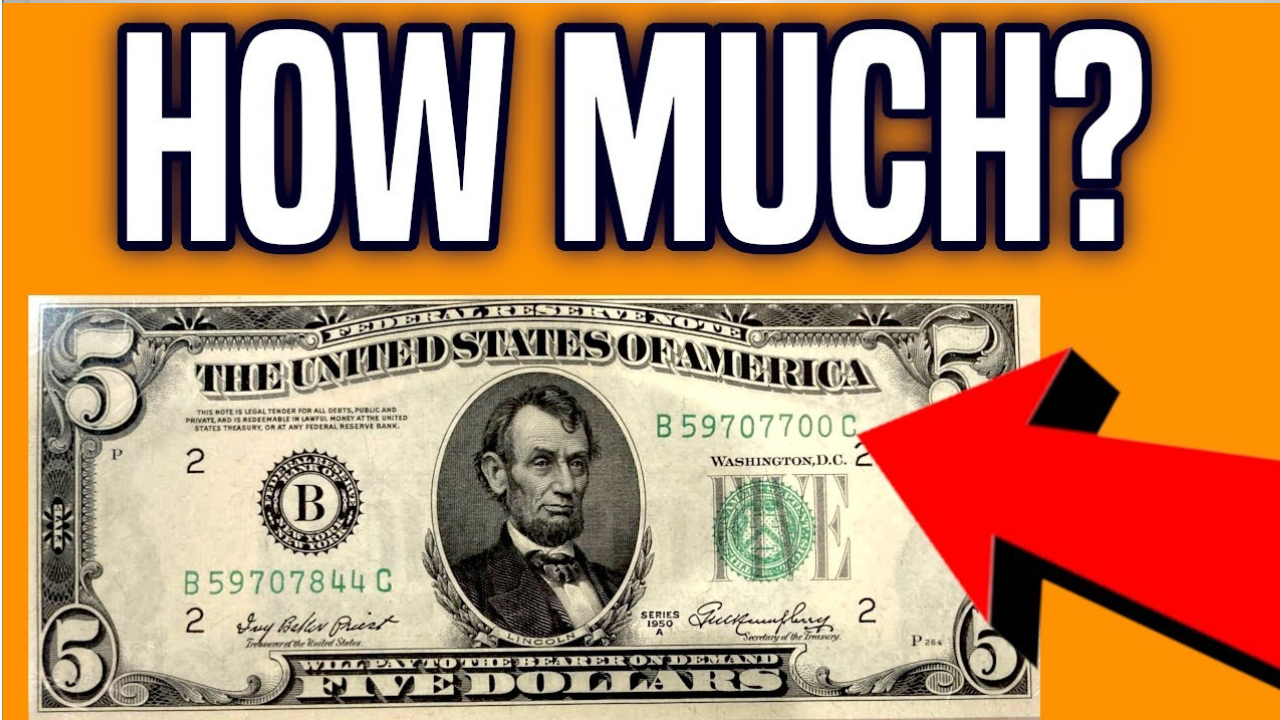995 $5 Bill:Have you ever checked the cash in your wallet and wondered if one of these bills could be worth more than its printed value? You may have a small fortune without even realizing it. One of the most interesting examples of this is a 1995 $5 note stamped upside down—a rare printing error that collectors are willing to pay thousands, even millions of dollars for.
In this article, we’ll explain how to identify this rare note, why it’s valuable, and how you can find out if you have it.
Why is the 1995 $5 note with the Erroneous Seal Printed Ppside Down so valuable?
The U.S. Bureau of Engraving and Printing (BEP) usually maintains strict quality control, but sometimes mistakes do happen. The 1995 $5 note became famous because a small batch of it had the Treasury seal printed upside down — meaning the seal appears upside down compared to the rest of the design.
Because so few of these erroneous notes entered circulation, collectors now consider them extremely rare and highly valuable. Depending on condition and serial number, some of these notes have sold at auction for anywhere from $2,500 to $25,000.
How to Identify a 1995 $5 Bill With an Upside-Down Seal
If you have a $5 bill from Series 1995, here are the steps to check if it’s one of the rare error notes:
| Feature to Check | Details | What to Look For |
|---|---|---|
| Series Year | Printed near the bottom right of Lincoln’s portrait | Look for 1995 specifically |
| Seal Placement | Right of Lincoln’s portrait | Check if the Treasury Seal is inverted |
| Federal Reserve Seal | Left of Lincoln’s portrait | Should be normal; only the right-side seal is affected |
| Serial Numbers | Top-right & bottom-left corners | Collectors prefer low numbers like 00000012 |
| Condition (Grade) | Crispness, folds, stains, and wear | Uncirculated bills are worth the most |
How Much Is a 1995 Upside-Down Seal $5 Bill Worth?
The value of these rare error notes depends on condition, rarity, and demand. Below is an approximate pricing guide:
| Condition | Estimated Value |
|---|---|
| Circulated (worn, folds) | $2,500 – $6,000 |
| Very Fine (minimal folds, clean) | $6,000 – $10,000 |
| Extremely Fine (sharp edges, no major wear) | $10,000 – $18,000 |
| Uncirculated / Mint (perfectly crisp) | $18,000 – $25,000+ |
Why do Collectors pay Such Big Bucks for Printing Errors?
Currency collectors, or numismatists, value notes showing printing anomalies because these provide rare glimpses of mistakes that shouldn’t have happened.
The upside-down seal is particularly desirable because:
- Fewer than 1,000 notes are believed to exist
- The currency is closely monitored for printing errors, so there are fewer mistakes that make it into circulation
- The 1995 series was already limited compared to other years
- It’s a visually striking mistake, making it extremely attractive to collectors
Other Valuable U.S. Currency Errors
If you didn’t find the upside-down seal, don’t worry — there are other error notes worth checking:
| Bill Type | Error Type | Approx. Value |
|---|---|---|
| $1 Bill (1988) | Inverted Overprint | $2,000 – $4,000 |
| $10 Bill (1993) | Double Print Error | $1,200 – $3,500 |
| $20 Bill (2004) | Misaligned Print | $3,000 – $8,000 |
| $100 Bill (1996) | Blank Back Error | $5,000 – $15,000 |
How to determine the authenticity of your rare $5 note
Before selling, make sure your note is authentic:
- Inspect the note carefully
Use a magnifying lens to check the print quality and look for official watermarks.
2. Check reputable sources
Compare your note to verified examples on trusted auction sites.
3. Get it professionally graded
Companies like PMG (Paper Money Guarantee) or PCGS Currency can officially grade and authenticate your note.
4. Sell through a trusted platform
Reputable sites like Heritage Auctions, Stack’s Bowers or eBay often fetch higher prices.
FAQs
Q 1. Are all 1995 $5 notes with the upside-down stamp valuable?
Yes, but their condition matters. Crisp, uncirculated notes are worth a lot more.
Q 2. How many upside-down $5 notes exist?
Experts estimate there are fewer than 1,000 in circulation today.
Q 3. Can I still spend one of these notes?
Technically yes — but that would be like spending $25,000 for $5. Better to have it appraised.
Q 4. Where can I sell my rare note?
Specialized auction houses, currency dealers, or online platforms like Heritage Auctions and eBay are best.
Q 5. Do newer $5 notes have similar errors?
Not often. The BEP has improved quality control, making modern errors less frequent and often more valuable.

